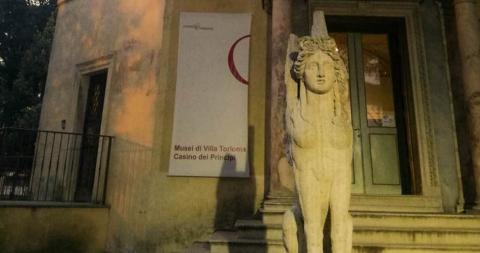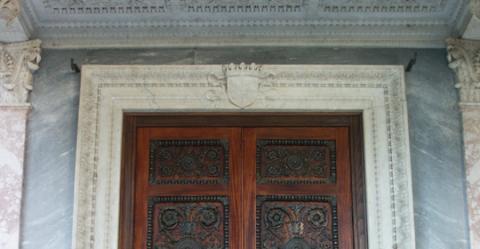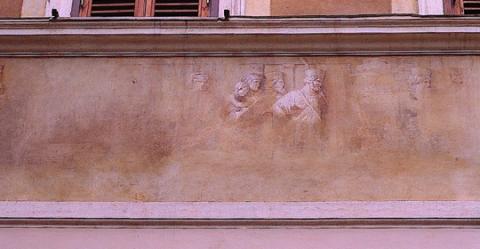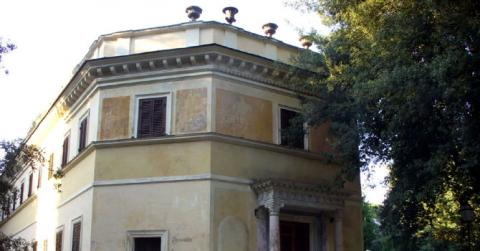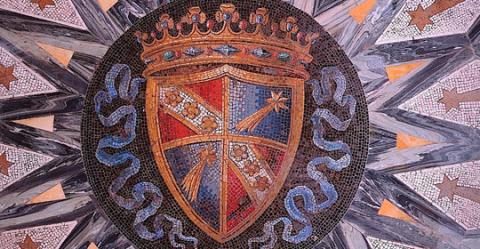The Casino dei Principi (The House of the Princes)
The House of the Princes took on its current neo-sixteenth century aspect, rich in internal and external decoration, following the redevelopment by Giovan Battista Caretti, between 1835 and 1840, as the wish of Alessandro Torlonia (1800-1886).
The initial nucleus of the House was a modest rural building of the Abbey vineyards, which had been present in the area for at least a century.
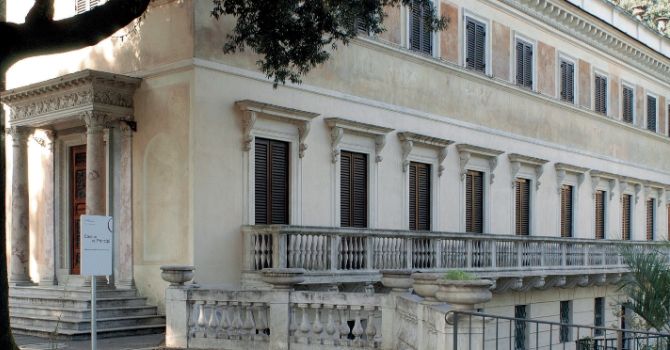

The idea of giving this building a main role in the architectural structure of the new Villa had already occured to Giuseppe Valadier, prior to Caretti’s work.
Valadier was, most probably, responsible for the transformation of the basic House, giving it a ground plan very similar to the present one, in the period around 1802, during which he is attested to have worked at the Villa Torlonia, and in 1818, when the structure had already been modified and employed as an architectural quinta obliqua, which carried the view of the visitors, whether proceeding along the Viale di lecci, or crossing along the Via Nomentana, to the focal point of the building.
The small and elegant House was used by Prince Alessandro Torlonia, during the sumptuous society events held in the Villa, as an annex to the main building, to which is was connected by an underground passage, which still joins the buildings today.
It enjoyed a privileged position in that the French windows, which open onto the charming balcony running along the main prospect, enjoy a magnificent view of the grounds and were used to help with the spectacles organised in the Amphitheatre below, which was demolished in 1910 when the Via Nomentana was widened.
The external architecture of the House displays various original decorative elements, such the two fine doorways in marble with antique columns, situated on the two minor sides, the cast iron vases, which decorate the attic and, on the main facade, the remains of a monochrome frieze, showing the Triumph of Alexander in Babylon.
The three rooms of the main floor were entirely redecorated with tempera work, showing views of Ancient Greece, Ancient Rome, which have all been lost, and, in what was the luncheon room, of the Gulf of Naples, painted by various painters, and co-ordinated by Giovan Battista Caretti.
The elaborate mosaic floors are among the most notable of the original decorations of the House of the Princes.
During the restoration work to the building, various pieces of eighteenth century decoration were discovered in the first room, which originally displayed views of Ancient Greece; in the Gallery only the frieze decorations, the work Giovan Battista Caretti and Filippo Bigioli, are conserved.






























